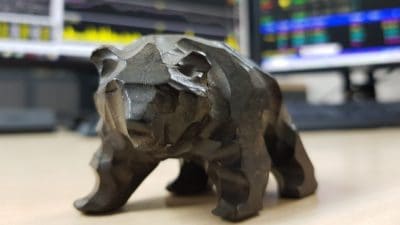With the FTSE 100 having fallen by over 10% since the turn of the year, it has been a highly challenging number of weeks for all investors. Looking ahead, it would be of little surprise for the FTSE 100 to fall further and with it trading at levels last seen in 2012, it’s all too easy to become frustrated and apathetic towards shares. After all, their performance has been very disappointing in recent years.
Yet these kinds of events are all part of being an investor. Looking back at history, share prices have never been stable for long and they’ve never risen without corrections and bear markets taking place. Therefore, the events of recent weeks are nothing new and have been faced by investors since investing began. And once this current decline is over and a bull market returns, it will only be a matter of time before the next correction and bear market occurs.
Long term vs short term
This attitude may seem rather downbeat and lacking hope. For many investors buying shares is an opportunity to fulfil a lifelong dream of retiring early and becoming financially free. As such, it’s a time of great hope, excitement and comes with great expectations. In the long run, there’s no reason why shares can’t fulfil those expectations, but in the short run things are often not so serene.
While many investors may view those short-term challenges as a downside to investing, where worry and fear increase, the reality is anything but. Ask any individual if they’d rather buy a car, house, clothes, holiday or anything else at a 10% discount to its price from six weeks ago and 100% of respondents would answer ‘yes’. Investing is probably the only industry in the world where the opposite is true. In other words, people want to buy more shares when the price goes up.
Of course, the reason for this is expectations. When share prices are relatively high, investors are full of confidence and the outlook for the economy is very bright. When they’re priced lower, the outlook for a company or economy is less favourable, hence the discounted price. However, expectations can often be wrong and by following market sentiment it’s possible to buy high and sell low, which leads to losses rather than profits.
As such, buying during challenging periods when the outlook is dire can be the most effective way to profit from shares. Doing so is difficult and takes a strong will in order to overcome the fear and doubts of the market. However, by accepting that shares will always fluctuate in value it’s possible to put price falls into a longer-term perspective. In other words, shares move in cycles and the time to buy is on a downward move, while the time to sell is on an upward one.
Although the FTSE 100 could move lower in the coming weeks, by buying now and holding for the long term it’s possible for shares to live up to even the headiest of expectations. The journey may not be smooth or straightforward, but history tells us that every correction and every bear market in shares has always eventually been followed by a recovery. Keeping that in mind should help an investor to keep their cool in a falling market.







